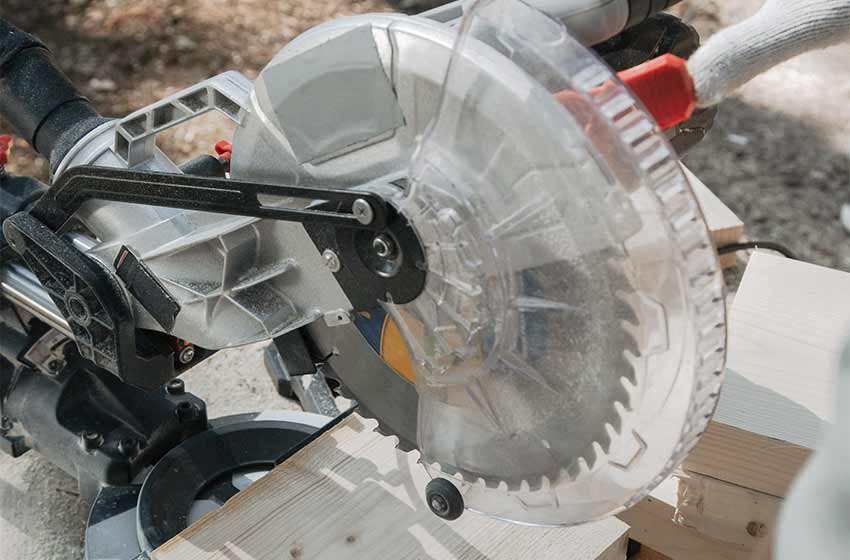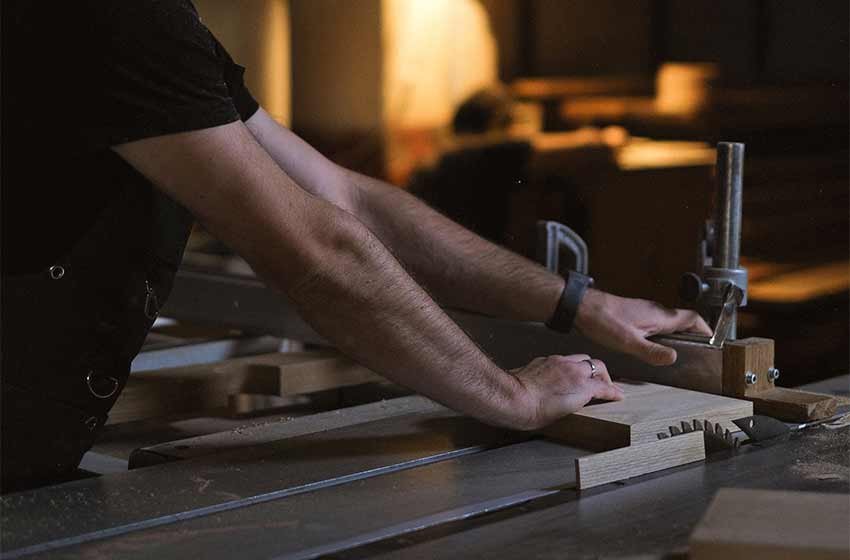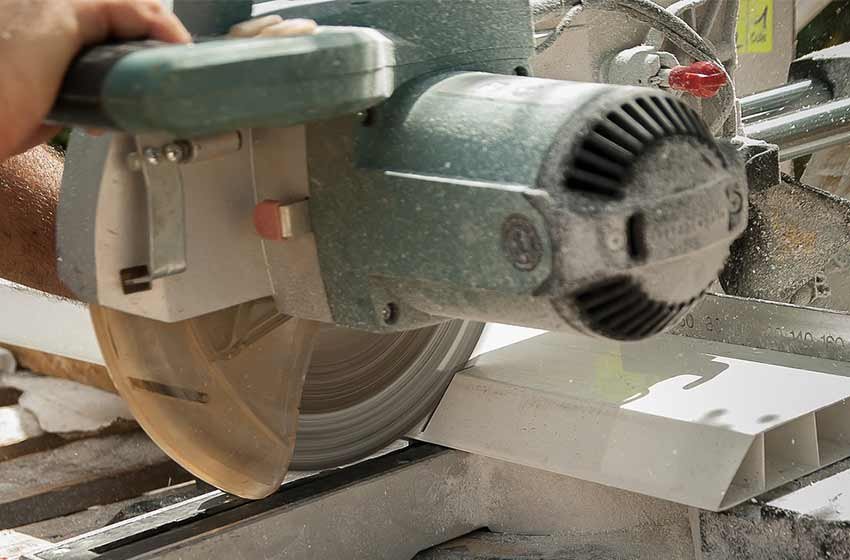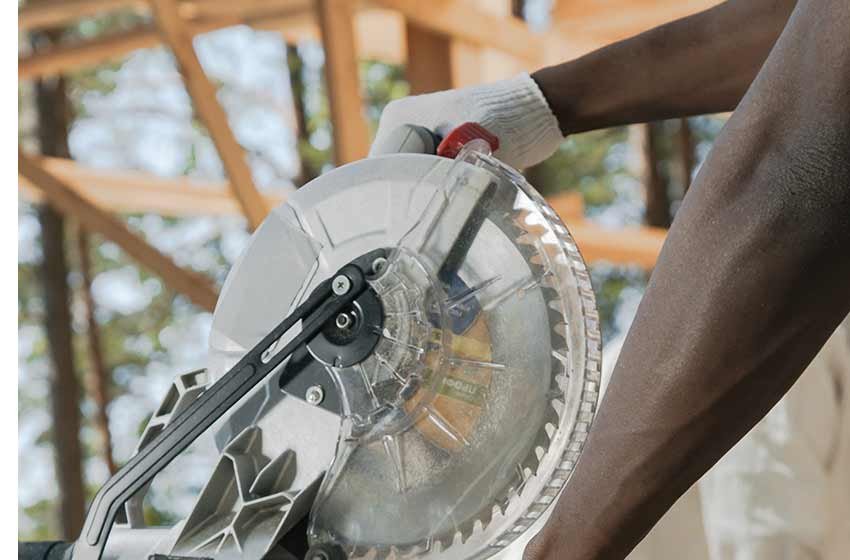Everything You Need To Know To Drill Into Concrete
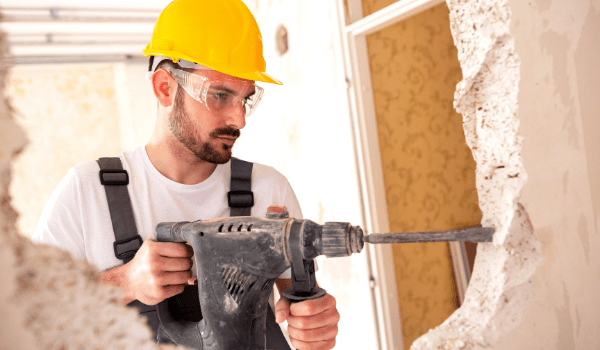
Concrete looks smart so many of us can’t get enough of the stylish modern-industrial look.
When it comes to drilling into concrete, that’s when things get a little more difficult. It’s a fair bit tougher than wood or plaster.
Can drilling into concrete crack it? Yes! If you don’t drill into concrete correctly it can cause it to crack. Despite concrete tough appearance, it can be very brittle and susceptible to cracking. This is why it’s important to know how to drill into concrete properly.
By not going about it the right way, you could end up with a broken drill or badly cracked concrete.
So if you’re looking to find out how to go about things the right way, then look no further!
Top Tips For Drilling Into Concrete
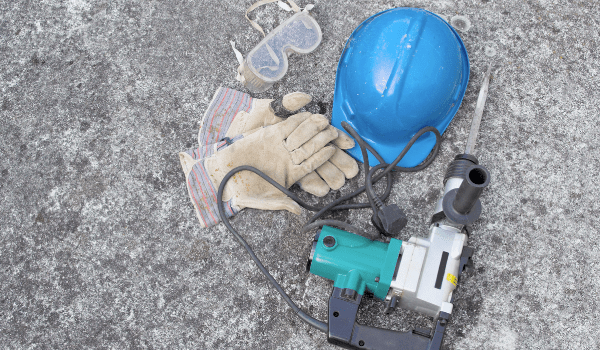
Before you make a start at drilling your concrete, it is worth casting your eyes over the tips below:
Use the correct drill bits - A set of masonry drill bits will be what you need for the job.
Choose the correct tool - If you do have a hammer drill, perfect! If not, you can still drill into concrete, you just need to take more care.
Find the right amount of pressure - Be mindful about applying too much pressure, this can result in damaging your drill. Too little pressure just don’t get the job done.
Have some water handy - Putting some water on the concrete can reduce the amount of dust and help to prevent overheating of your drill.
Jams are probably going to happen - Depending on what concrete you are dilling in to, you may hit other material that isn’t concrete. Should this happen, simply remove the drill and use a hammer with a nail to break up the material. If this can’t be done, you may need to find a different place to drill.
Safety first - Okay so this is our last tip but it’s the first thing you should think about. Safety goggle and a dust mask will keep dust and debris away from your face. This is important!
What is the best way to drill into concrete?

There are a few different ways that you can drill into concrete but the absolute best way is to use a hammer drill.
What is so special about a hammer drill? Well for starters, it hammers. A regular drill will cut through the material by spinning. What a hammer drill does is hammer its way through it too.
While it is spinning, the drill bit will move up and down, in a similar way to a hammer.
This hammering and spinning combination increases the force of the drill, meaning concrete can be tackled much more easily with this type of tool.
While a drill is an important part of the success of the job but without the correct drill bit to go with it, you could find yourself unable to break through the concrete.
A regular drill bit is not going to do the job. A regular drill may get you through a concrete wall. A regular drill bit will not.
What you need is a masonry drill bit. These are different from a regular drill bit and they are designed especially to cope with this type of job.
A masonry drill bit is built differently to a regular bit, it has a wider tip. This additional width allows you to create an opening wide enough that you are able to make a proper hole in the concrete.
Masonry drill bits are strong, they are designed to be that way. What makes them so strong? The material they’re made from. The material used to make masonry drill bits is known as carbide.
Due to carbides tough construction it can take on things like concrete with little trouble.
Kit yourself up with a hammer drill and a carbide drill bit and you’re ready to take on the concrete!
How To Drill A Hole In Concrete Using A Hammer Drill
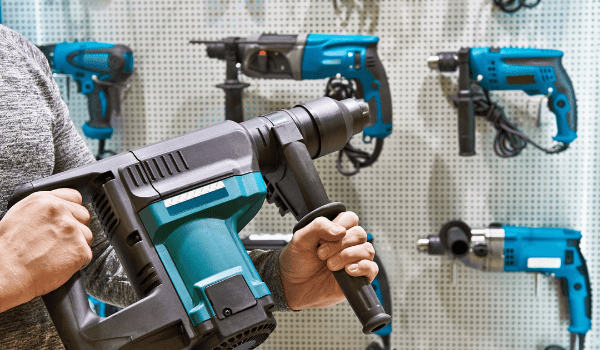
If you haven’t yet got a hammer drill in your collection, then we’d recommend it as your next purchase!
There are lots of jobs that a hammer drill makes easier for you and when you don’t need the hammer function, it can be switched off.
The great thing about a hammer drill is that holes can be made relatively easily in concrete. Having the ability to switch the hammer function on or off really does add the the versitiliaty of this drill so you should find it to compliment your current array of tools nicely!
So let’s get down to how you go about drilling into concrete with hammer drill.
Step One: Mark The Hole & Get Ready
Put on your safety equipment. I can assure you, you don’t want the dust going in your eyes or mouth.
Mark up the spot where you are planning to drill the hole. If your hammer drill has a stop bar set it to the depth you require.
If your hammer drill doesn’t, then you can use the old fashion method of putting some masking tape on the drill bit at the depth level you want.
Now grab the right sized mansory drill bit and put it in your drill.
Your drill is ready, are you?
Ideally you want to be standing directly in front of where you will be drilling. You should be able to have your feet firmly on the ground.
Step Two: Drill!
Ok so it’s not as simple as just drilling.
You will want to make sure you have a good solid grip of the drill, with both hands. One hand will be near the power button. On some power drills there are support handles, if yours has one, use it - they’re great.
If not, that’s cool too, hold the back of the drill with your spare hand.
There is likely to be some recoil when you hit the power button, this is due to the hammer motion and the spinning. This isn’t something you can get away from but you can train yourself to deal with it like a pro.
If you go at it all gun-ho and the drill recoils you are likely to mess up the hole as the drill moves out of position.
Start off very slowly, you will be able to understand how the drill moves. After some time, you’ll be more confident and be able to pick up speed.
The best way to approach this is to make a shallow hole to use as a guide. To do this keep the drill at the slowest speed you can manage.
The depth of this hole will only need to be around ⅛ or ¼ of an inch, this will be enough to act as a guide.
When you are happy with your guide hole and you are confident using the hammer drill, you can up your speed.
Still keeping things relatively steady and be mindful of the pressure you’re applying to the drill.
Step Three: Clear Any Blockage
Earlier we spoke about the fact blockages do happen, something that isn’t concrete may be in the way.
You may find yourself having to stop to clear this, sometimes with a hammer and nail. Other times it may not be possible to carry on drilling there, depending on what is causing the blockage.
While clearing is on your mind, don’t forget to keep the drill and the drill bit clear. You may want to take the drill bit out of the hole every now and again to remove any build up of dust. This will keep things running smoothly and speed things up.
Step Four: Clear The Dust And Admire

If you have a can of compressed air handy, this can be a great way to clear the hole from the dust that has inevitably built up.
Once the area is tidy, stand back and admire your first hole in concrete!
Final Thoughts
Without a doubt your life will be easier if you have the right tools for the job but there are many ways to drill a hole in concrete.
Hopefully you now feel ready to take the challenge on - what will be your first project?





